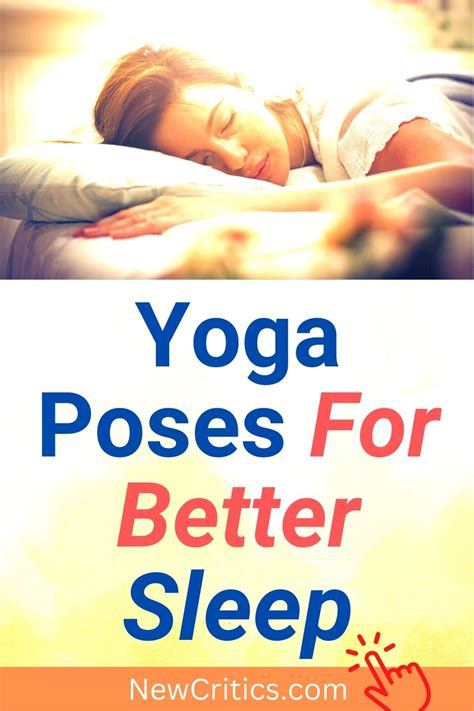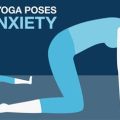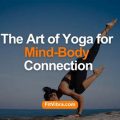Exploring Different Types of Yoga for Improved Sleep: A Comprehensive Guide
In today’s fast-paced world, sleep problems have become a prevalent issue for many people. One of the most effective, natural ways to improve sleep quality is through yoga. However, not all types of yoga are equally beneficial for sleep. This guide explores various types of yoga that are specifically designed to promote relaxation and improve sleep, providing a detailed look at how each method works, who it benefits, and how to implement it in your daily life.
Introduction
Millions of people suffer from insomnia, restless sleep, and other sleep disturbances. Yoga, with its focus on mind-body connection, offers a natural solution to these issues. While vigorous forms of yoga can energize the body, other types are specifically crafted to relax the nervous system, reduce stress, and prepare the body for restful sleep. In this article, we will look at different yoga types, such as Hatha, Yin, Nidra, and Restorative, among others, to understand their roles in improving sleep patterns and overall relaxation.
Key Concepts
Before diving into the different types of yoga, it’s essential to grasp some core principles. These key concepts explain how yoga can impact sleep:
- Breathing Techniques (Pranayama): Controlled breathing is integral to yoga and plays a significant role in calming the nervous system and lowering stress levels.
- Mindfulness and Meditation: The focus on present-moment awareness in yoga promotes relaxation and mental calmness, both essential for falling asleep and staying asleep.
- Postures (Asanas): Certain yoga postures are designed to release tension from the body, especially around the neck, shoulders, and back—areas commonly associated with sleep problems.
- Circadian Rhythm Regulation: Some yoga practices align with the body’s natural sleep-wake cycles, supporting the regulation of circadian rhythms, crucial for good sleep.
Historical Context
Yoga has ancient roots in Indian philosophy, dating back over 5,000 years. Historically, yoga was developed not just for physical health but for mental and spiritual clarity. Many of its practices were designed to quiet the mind and body, making it a natural companion to sleep health. The evolution of different yoga styles has enabled specific focuses, such as stress relief, relaxation, and the improvement of sleep.
While most early yoga texts, such as the Yoga Sutras of Patanjali, focus on achieving mental stillness, modern adaptations have honed certain practices specifically for rest and recovery, making them highly suitable for sleep.
Current State Analysis
Currently, yoga is widely recognized as an effective tool for improving sleep, particularly by alleviating stress, anxiety, and tension. Scientific research supports these claims. For instance, a study published in the Journal of Clinical Sleep Medicine found that individuals who practiced yoga regularly had improved sleep quality, reduced insomnia, and a faster onset of sleep. However, the specific type of yoga practice significantly impacts these results. Some styles, like Vinyasa or Ashtanga, are more vigorous and can be stimulating if performed too close to bedtime. This analysis will differentiate among these styles, focusing on the more sleep-enhancing options.
Practical Applications
Here, we break down some of the most effective yoga styles for better sleep and how they can be integrated into daily routines.
1. Hatha Yoga
Hatha yoga is one of the most widely practiced forms and is a great introduction to yoga for sleep. It involves gentle movements and stretches, often combined with controlled breathing.
- Best for: Beginners and those looking to ease physical tension.
- Key Benefits: Calms the mind, stretches the muscles, and relieves tension.
- Example Poses: Corpse Pose (Savasana), Child’s Pose (Balasana), and Legs-Up-The-Wall Pose (Viparita Karani).
2. Yin Yoga
Yin yoga focuses on slow, passive stretching, targeting deep connective tissues and joints. It’s especially effective for sleep as it encourages stillness and mindfulness, helping quiet an overactive mind.
- Best for: People with high-stress levels and anxiety.
- Key Benefits: Increases relaxation, improves flexibility, and reduces muscle tension.
- Example Poses: Butterfly Pose (Baddha Konasana), Reclining Twist (Supta Matsyendrasana), and Sphinx Pose.
3. Yoga Nidra
Often referred to as “yogic sleep,” Yoga Nidra is a guided meditation practice where practitioners enter a deep state of conscious relaxation. This practice is particularly beneficial for sleep as it directly targets the parasympathetic nervous system.
- Best for: Individuals who suffer from chronic insomnia.
- Key Benefits: Deep relaxation, mind-body connection, and reduced stress hormones like cortisol.
- Example Practice: Guided body scan meditation, breath awareness techniques.
4. Restorative Yoga
Restorative yoga is focused on total relaxation by holding passive poses for extended periods (often 5-10 minutes). This type of yoga is perfect for winding down before bedtime.
- Best for: Those who experience physical exhaustion and mental fatigue.
- Key Benefits: Promotes deep relaxation and stress relief.
- Example Poses: Supported Child’s Pose, Reclined Bound Angle Pose, and Supported Bridge Pose.
Case Studies
| Case Study | Yoga Type | Sleep Improvement | Duration of Practice |
|---|---|---|---|
| John, 45, Insomnia | Yoga Nidra | Significant improvement in falling asleep within 2 weeks | 3 sessions per week |
| Sara, 30, Stress-related sleep issues | Restorative Yoga | Reduced nighttime wakefulness after 1 month | Daily practice |
| Mike, 50, Anxiety-induced insomnia | Yin Yoga | Longer sleep duration after 2 months | 5 times per week |
Stakeholder Analysis
Understanding the impact of yoga on various groups is key to determining how it can be promoted for better sleep:
- Healthcare Providers: Doctors and therapists increasingly recommend yoga for patients with sleep problems, particularly those with insomnia and stress-related disorders.
- Individuals: Those with high levels of anxiety, stress, or physical discomfort are the primary beneficiaries of sleep-focused yoga practices.
- Yoga Practitioners: Teachers can focus on sleep improvement as part of their yoga offerings, which could benefit students and expand their clientele.
Implementation Guidelines
To maximize the sleep benefits of yoga, individuals should follow these guidelines:
- Practice Time: Perform yoga at least 1-2 hours before bed to allow the body to relax without overstimulation.
- Breathing: Focus on slow, deep breathing throughout the practice to enhance relaxation.
- Regularity: Consistency is key. Even 10-15 minutes of yoga every night can lead to noticeable improvements in sleep quality over time.
- Environment: A quiet, dimly lit space can enhance the relaxing effects of yoga, promoting a transition into sleep.
Ethical Considerations
While yoga is generally considered safe, it’s important to ensure that all yoga practices are inclusive and accessible. Yoga for sleep should be promoted not only for those who can afford regular classes but also for underserved populations. Additionally, instructors must remain mindful of individual physical limitations and avoid recommending poses that could cause discomfort or injury.
Limitations and Future Research
Though many studies highlight the positive impacts of yoga on sleep, more research is needed to determine the long-term benefits and how different demographic groups respond to specific yoga practices. Current limitations include small sample sizes and a lack of diversity in participant demographics. Future research could explore the effectiveness of various yoga styles across different age groups, physical abilities, and stress levels.
Expert









